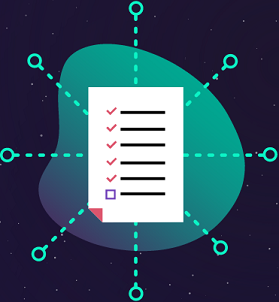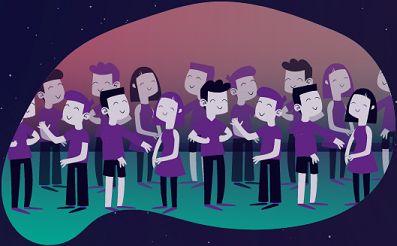
Most of our clients don't run IT companies. But we must all consider the digital and cultural transformations required to support remote working - sometimes at short notice.
At Viva IT we find ourselves leaning heavily on certain communal software solutions and communication practices which allow us to remain effective in our transition to remote working. So in this blog I document lessons and supportive strategies we have learned so far in the hope that some of this information might be transferable into your industry.
Daily Scrum
A 10-15 minute morning team meeting conducted over video conferencing helps our teams coordinate. Sometimes a shared living document is used as a focal point to reflect the state of current projects and tasks.
Each team member is expected to share an overview of their progress and intentions for the day in turn. Anything causing blockers (or leading them to be ‘stuck’) is considered priority information to share. This allows colleagues or managers to earmark some topics for discussion at a later time with the relevant team members.
Attendees must be willing to share blunt and ‘unsanitised’ information for this to work effectively so limiting meeting attendees to a specific operational or project team might work best. There is a fine balance between sharing information in a straightforward manner and turning it into a public morning blame game, so this works best in teams with a high relative level of trust. For less cohesive teams it will possibly need chairing more strongly while the root cause is addressed elsewhere.
Trying to find a pattern of questions which is the same every day can reduce the chance of the meeting becoming as a source of stress to participants. Also consider limiting extensive cross-talk and dialogue in the scrum itself (anything that cannot be solved in 2 minutes should likely be discussed with a subset of the team later on).
Example questions for the scrum might include:
- What I did yesterday.
- What I will do today.
- What is causing me issues.
At the end of the scrum you may choose to set aside a set period of time for any other business which is relevant to the group as a whole.
Issue Tracking Software
This is essential for many organisations and specifically we use YouTrack but other options are available, some more suited to other industries.
The goal is to maintain an accessible list of ‘todos’, accountabilities, and their relationships with the wider work being undertaken to help establish progress on the critical path of success.
Cloud Access
The tricky issue of finding tools which allow all team members to access all relevant systems including telephony from all locations without compromising security or data protection. An example here would be customised configuration of our Apollo Launchpad CRM for our credit union partners instead of traditional access directly into their back office system.
Telephony headaches can be alleviated if you can reduce the reliance of telephone conversation in the first place by ensuring customers, suppliers, and partners have other well supported avenues of access to you. Again, for the example of our credit union partners this will include encouraging members to access functions digitally, for example on their Apollo Mobile Apps.
Document Collaboration
 Being able to work on documents in real time with colleagues or asynchronously is proving invaluable. A staple combination tends to be Google Sheets and Google Docs with files stored centrally on Google Drive
Being able to work on documents in real time with colleagues or asynchronously is proving invaluable. A staple combination tends to be Google Sheets and Google Docs with files stored centrally on Google Drive
I should also give an honourable mention to Jamboard for our digital whiteboarding needs.
It is also very handy to use software that lets you version control, such as the above. This prevents the age-old problem of multiple versions of the same document flying round called “Final-version-2-APPROVED-changes.doc” once and for all!
Asynchronous Text Chat
Every team member has a presence on Slack which acts as our chat messenger programme, with dedicated channels for specific teams and purposes. However immediate responses should not become the expected norm or it will act as a distraction.
Digital Meetings
We use Google Meet. Recapping actionables and ensuring they are stored in a shared location seems to be key. Also using e-calendars to coordinate meetings, and sharing these calendars internally where possible.
Retrospectives
A meeting of 30-60 minutes at the end of the week, fortnight, or project milestone. For us there are always three topics that initiate discussion:
- What went well, (or what I liked).
- What didn’t go well, (or what I disliked).
- What could be improved.
Stakeholders on the project, or members of the team contribute in turn until all the ‘likes’ have been shared, then onto the dislikes, and so on until we are finishing the meeting talking about improvements and maybe recording an action or two.
We may also use the retrospective to examine our handling of a reactive event (or sequence of events) after the fact. For example if we have had a service outage that week, to take the time to review what happened, and what could be avoided in future as a matter of routine.
Your Experiences
 I should mention that at the time of publishing we have no affiliation (incentivized or otherwise) to other companies software which has been covered, apart from finding them useful.
I should mention that at the time of publishing we have no affiliation (incentivized or otherwise) to other companies software which has been covered, apart from finding them useful.
Our team would be fascinated to see what transferable lessons on remote working you have learned in your company or organisation as we look to continually improve our operations just as you do. It would be great if you shared your own thoughts via Twitter (@Apollo_Infinity), our Apollo Linkedin group, or as a blog.